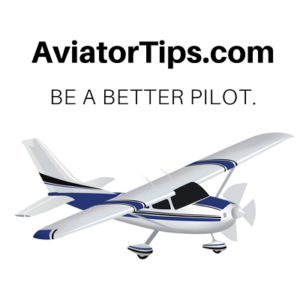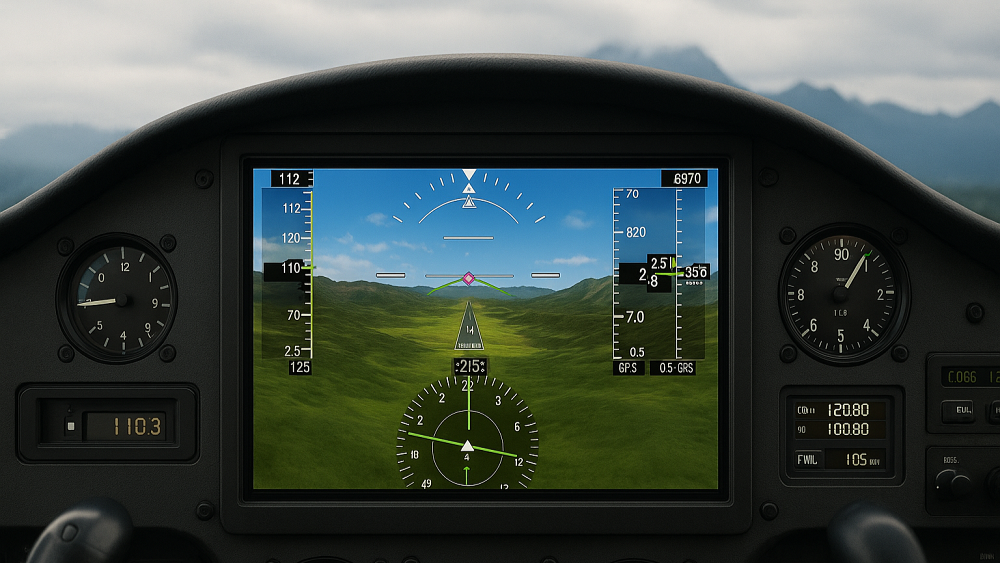Modern aircraft are doing more than ever before. With the rise of smart avionics, today’s cockpits are filled with systems that think, adapt, and assist in real time. These advances are not limited to airliners or business jets. General aviation is experiencing a wave of innovation that makes flying safer, easier, and more connected for everyone from student pilots to seasoned professionals.
If you are a student or new private pilot, you are training during one of the most exciting times in aviation history. Systems that once required constant pilot monitoring can now manage themselves. Flight decks that once relied on rows of dials now offer glass panels, touchscreens, and real-time data integration. Understanding how smart avionics work and how to use them effectively is key to becoming a well-rounded and confident pilot.
What Are Smart Avionics?
Smart avionics are electronic systems in aircraft that can automate tasks, analyze real-time data, and support pilot decision-making. These systems go beyond simply displaying information. They interpret it, cross-check it, and sometimes act on it.
Examples of smart avionics include:
- Glass cockpit systems that show synthetic vision
- GPS units that adjust for terrain and airspace
- Autopilots that fly entire flight profiles including approaches
- Traffic and weather systems that give real-time alerts
- Engine monitors that track trends and predict issues
- Voice-controlled cockpit assistants
These systems combine data from multiple sources such as GPS, ADS-B, terrain databases, and weather feeds. They analyze that data to help the pilot stay ahead of the aircraft.
Key Components of Smart Avionics Systems
Smart avionics are made up of several integrated systems, each contributing to a smarter and more connected cockpit. Here are the most important ones that student and private pilots will encounter.
1. Glass Cockpit Displays
Modern aircraft are increasingly equipped with electronic flight instrument systems (EFIS), replacing traditional steam gauges. These glass cockpit displays include:
- Primary flight displays (PFD)
- Multi-function displays (MFD)
- Integrated engine monitors
- Flight path vectors and synthetic vision
Smart glass displays adapt based on the phase of flight, system status, and user input. They often include built-in navigation, weather overlays, and terrain alerts.
2. GPS Navigation with WAAS and LPV Capability
Smart GPS units provide more than just position. They integrate with terrain, approach procedures, and performance data to guide the pilot along precision flight paths. WAAS-enabled GPS units can fly LPV approaches, which rival the precision of an ILS but do not require ground-based infrastructure.
Some units even suggest reroutes or display glide paths in emergency scenarios.
3. Autopilot and Flight Directors
Modern autopilots are no longer just heading and altitude hold devices. Advanced units can:
- Follow GPS flight plans
- Climb, descend, and level off smoothly
- Fly holds, procedure turns, and entire instrument approaches
- Engage automatic level or recovery modes if the pilot becomes disoriented
Flight directors show suggested pitch and bank commands on the screen, guiding pilots toward stable flight.
4. ADS-B and Traffic Awareness Systems
With ADS-B In, smart avionics can show nearby aircraft in real time, including their direction, altitude, and speed. This data is displayed on moving maps and alerts the pilot of potential conflicts with audio and visual warnings.
This greatly enhances situational awareness during pattern work, enroute flying, and arrival procedures.
5. Synthetic Vision and Terrain Alerts
Synthetic vision provides a 3D display of the terrain, obstacles, and runway environment, even in poor visibility. It recreates a virtual outside view using GPS and database data, helping pilots maintain orientation and awareness.
Terrain alerting systems also warn of rising terrain or potential controlled flight into terrain (CFIT) risks.
6. Engine Monitoring Systems
Smart engine monitors track parameters like cylinder head temperatures, exhaust gas temperatures, RPM, oil pressure, and fuel flow. These systems provide trend data and alert the pilot to any out-of-limit conditions.
Some systems can download data for post-flight analysis or upload it to cloud storage for mechanics to review.
7. Voice Recognition and Touchscreen Control
Some avionics systems now offer voice commands for tasks like tuning radios, entering waypoints, or adjusting flight plans. Touchscreen interfaces also reduce workload by making it faster to access key features.
These user-friendly controls help reduce time spent head-down and allow pilots to stay focused on flying.
Benefits of Smart Avionics for Student and Private Pilots
The rise of intelligent systems provides several advantages for pilots in training and early in their flying careers.
1. Increased Safety
Smart systems can catch errors before they become problems. From traffic alerts to incorrect checklist steps, these systems act as a second set of eyes and ears in the cockpit.
2. Better Situational Awareness
Real-time maps, synthetic vision, traffic displays, and terrain overlays give pilots a better sense of where they are and what is happening around them. This is especially valuable in busy airspace or poor weather.
3. Easier Navigation
With flight plans displayed visually and routes updated automatically, pilots can spend more time flying and less time fiddling with charts or radios.
4. Enhanced Training and Learning
Smart avionics often include features like flight logging, track review, and built-in checklists. These tools help student pilots understand what went well and what needs improvement after each flight.
5. Support in Emergencies
Many smart avionics systems offer emergency modes or guidance. Some can even suggest best-glide paths, display landing options, and show power-off approaches to nearby runways.
Potential Pitfalls and How to Avoid Them
While smart avionics offer many advantages, they can also lead to overreliance or distraction if not used properly. Here are a few common traps to watch out for:
1. Automation Dependency
Pilots who rely too heavily on the autopilot may lose manual flying skills. Make time to hand-fly regularly and maintain your basic stick-and-rudder proficiency.
2. Head-Down Time
Smart systems can be engaging and detailed, but spending too much time looking at screens takes your attention away from scanning for traffic and monitoring outside conditions. Always fly the aircraft first.
3. Lack of Understanding
It is easy to assume that the system will take care of everything. But if you do not understand how your avionics work, you may miss important cues or enter incorrect data. Take the time to read the manual, watch tutorials, and practice on the ground.
4. False Sense of Security
Even the smartest system is only as good as the data it receives. GPS outages, weather errors, or user mistakes can still lead to unsafe situations. Always cross-check with other instruments and common sense.
Tips for Training with Smart Avionics
If you are learning to fly in a smart cockpit or transitioning to more advanced systems, here are a few ways to make the most of the experience:
- Spend time on the ground learning your system before using it in flight
- Use training simulators or mobile apps to explore menus and features
- Create flows for common tasks like programming flight plans or changing frequencies
- Practice failure scenarios such as GPS loss or autopilot disconnect
- Ask your instructor to quiz you on button functions and emergency modes
- Keep a quick reference guide or checklist handy for inflight use
The Future of Smart Avionics
Looking ahead, avionics will only become smarter and more connected. We are already seeing systems that:
- Use artificial intelligence to monitor pilot workload
- Offer real-time connectivity to maintenance services
- Integrate seamlessly with EFB apps and cloud platforms
- Provide predictive weather and traffic routing
As a student or private pilot, staying current with these technologies will help you fly more safely, operate more efficiently, and be better prepared for advanced ratings or aircraft.
Final Thoughts
Smart avionics are not just a passing trend. They are reshaping the general aviation landscape and offering pilots more information, better tools, and improved safety. For student and private pilots, understanding and embracing these technologies can be a major advantage.
But just as with any tool in aviation, the key is to use them wisely. Learn how they work, know their limits, and never forget the basics of flying the airplane. Combine smart avionics with solid airmanship, and you will be ready for whatever the skies bring.
Sources:
– FAA: *Advisory Circular 20-173 – Installation of Electronic Flight Displays*
– Garmin: *G3X Touch and Autopilot Features*
– AOPA: *Glass Cockpit Training Tips*
– EAA: *Transitioning to Smart Cockpits*
– ForeFlight: *Avionics Integration and Features Overview*
Recent Posts
FAA MOSAIC Final Rule: What Pilots, Manufacturers, and the Aviation Community Need to Know
Learn how the FAA’s MOSAIC final rule revolutionizes Light-Sport Aircraft certification, expands Sport Pilot privileges, and reshapes general aviation. See what’s changing, when it takes effect,...
Student Pilot Insurance: Essential Coverage for Aspiring Flyers
Discover how student pilot insurance can protect your flying dreams. Get expert tips and coverage options to ensure your safety and peace of mind.


